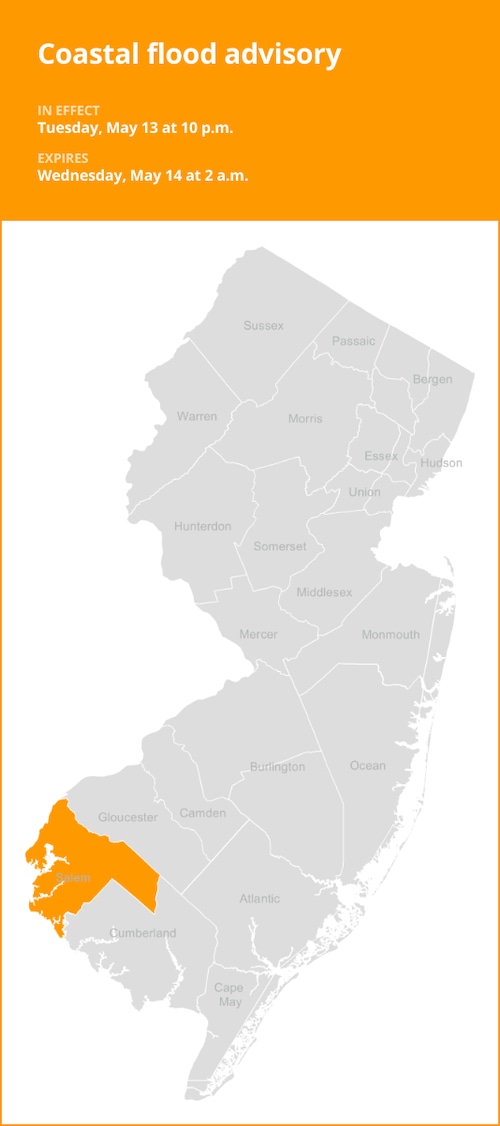Understanding a Coastal Flood Watch: What It Means and How to Stay Safe

If you live near a bay, ocean, or tidal waterway, understanding a coastal flood watch is crucial for your safety. Flooding along coastal areas can happen quickly when conditions are right, often leading to road closings, property damage, and dangerous travel situations. In this article, we'll explain what a coastal flood watch means, how it compares to other flood alerts, and how to prepare when one is issued for your area.
What Is a Coastal Flood Watch?
A coastal flood watch is issued by the National Weather Service (NWS) when conditions suggest possible flooding along shores and tidal zones within the next 12 to 48 hours. This type of alert signals a need to be prepared, as flooding may threaten low-lying roads, homes, and infrastructure near the coastline due to factors like heavy rain, storm surge, or high tides.
Unlike a flood warning—which calls for immediate action—a coastal flood watch serves as an early alert. It encourages you to monitor changing conditions and take preliminary safety steps.
How Is a Coastal Flood Watch Different from Other Flood Alerts?
The NWS issues different alerts depending on the severity and timing of potential flooding:
- Flood Watch: Conditions are favorable for flooding, often after prolonged or heavy rain. Be prepared, but flooding is not guaranteed.
- Flood Advisory: Minor flooding may cause inconvenience but is not expected to become life threatening.
- Flood Warning: Flooding is imminent or already occurring. Act immediately to protect yourself and property.
- Coastal Flood Advisory or Warning: Used when minor to significant coastal flooding is expected. This specifically relates to coastal areas vulnerable to tidal surges.
- Coastal Flood Watch: Signals that flooding along the coast is possible and residents should remain alert.
For a detailed breakdown of these alerts, visit the NJ.com guide to weather warnings and advisories. Their article also provides essential safety tips for flood-prone areas.
Why Are Coastal Flood Watches Issued?
Coastal flood watches are typically prompted by:
- Heavy or prolonged rainfall impacting tidal zones
- Storm surges associated with hurricanes or nor’easters
- High astronomical tides coinciding with other weather factors
A recent coastal flood advisory for Salem County highlighted how even just a foot of water above normal levels can prompt road closures and threaten low-lying property.
Additionally, intense rain events can lead to overlapping alerts, such as flash flood warnings in urban areas. In May 2025, several Philadelphia-area counties faced such serious threats. The National Weather Service issued a Flash Flood Warning for Philly and surrounding suburbs due to quickly rising water from heavy storms.
Safety Tips During a Coastal Flood Watch
If a coastal flood watch is in effect in your area, use these action steps to stay safe:
- Stay Informed: Monitor local weather updates and sign up for emergency alerts on your phone.
- Move to Higher Ground: If you are in a flood-prone area, prepare an evacuation plan and know your nearest high ground.
- Protect Property: Move valuable items to higher floors. Prepare sandbags if advised by local authorities.
- Avoid Flooded Roads: Never drive through water. As little as 12 inches of moving water can carry away most cars, and the road below may be damaged or washed away.
- Follow Official Guidance: Obey evacuation orders and barricades. Stay clear of tidal waterways during and after significant weather.
For more flood safety advice, review the National Weather Service recommendations for Burlington County, which emphasize the dangers of swift water and the importance of early evacuation.
Conclusion
A coastal flood watch is an early warning sign for residents along tidal and shore areas. By staying informed and following simple safety steps, you can protect yourself, your family, and your property during these potentially hazardous events. Regularly check weather alerts and be proactive to reduce risks when flood conditions arise.
For ongoing updates and more tips, continue following trusted local sources and heed the advice from weather authorities.